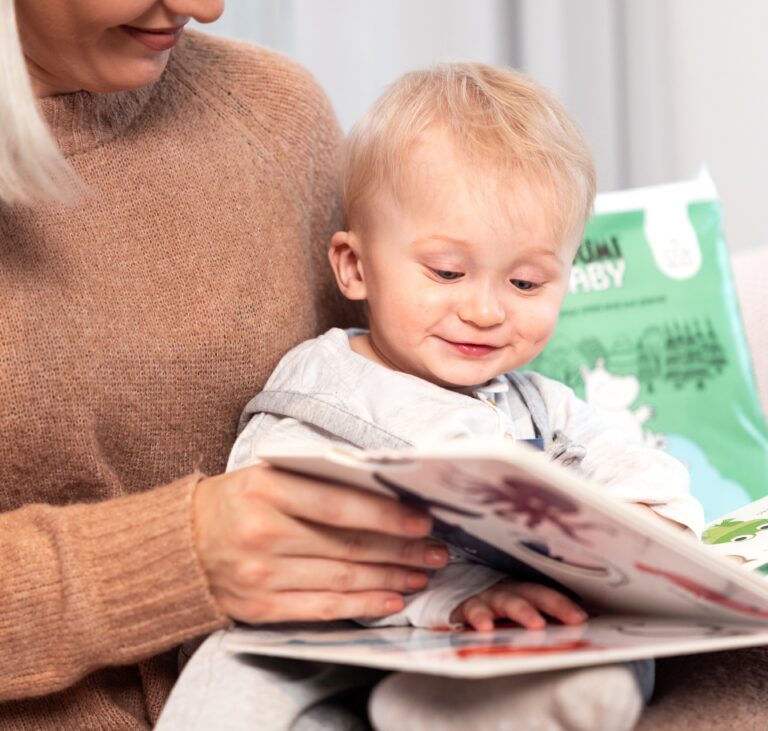A baby’s first moments in the world are full of new experiences and vital development steps. One of the most significant is skin contact – a simple but powerful gesture that lays the foundation for a child’s physical and mental well-being. In this article, we delve into the importance of skin-to-skin contact in a baby’s early development, explain its benefits, and give tips on how parents can incorporate this gentle procedure into their everyday life with their child.
A healthy beginning: The impact of skin contact on newborn health
Skin contact, i.e. placing the baby on bare skin right after birth, is a significant factor in newborn health. This simple but effective practice helps to regulate the baby’s body temperature, breathing and heart rate, which promotes a faster adaptation to life outside the womb. In addition, skin contact supports the newborn’s immune system, as it provides an opportunity to transfer the parent’s microbes to the baby, which can reduce the risk of infection. A healthy beginning to life isn’t just limited to physical benefits; skin contact also reduces the newborn’s stress, which can have a positive effect on the baby’s long-term development. Warmth, touch and closeness create a sense of security, which is fundamental to a baby’s emotional well-being. Because of these benefits, health professionals encourage families to spend as much time as possible with skin contact during the baby’s first moments and days.
Skin contact supports the newborn’s immune system
The role of skin contact in strengthening the bond between the mother and the baby
Skin contact is a key factor in forming a deep and lasting bond between the mother and the baby. When the baby is placed on the mother’s bare skin immediately after birth, it creates a connection based on warmth, smell and the rhythm of the heartbeat. This first touch helps release the hormone oxytocin, also known as the “love hormone”, and it makes both the mother and the baby feel calmer and more secure. In this way, the interaction between the baby and the mother begins naturally, and the emotional bond grows stronger with each skin contact. Skin contact also supports parenting intuition, as it helps the mother better understand her child’s needs. With this intimate moment, the baby feels closeness and security, which is significant for their emotional and psychological development. The bond created through skin contact is especially important for mothers who experience postpartum depression, as it can help increase positive feelings and strengthen the attachment relationship.
Are you nervous about your baby’s first visit to the maternity clinic? Read here what happens at the maternity clinic and how you can prepare for it!
Stress relief through cuddling: How does skin contact calm the baby?
Skin contact is an effective way to relieve your baby’s stress and calm them down. Placing the baby on the parent’s bare skin creates a sense of closeness and security, which helps reduce crying and restlessness. Such moments stimulate the release of oxytocin, which is known to help reduce levels of stress hormones such as cortisol. The calming effect of oxytocin is clearly visible in the baby’s behavior: their heart rate and breathing rhythm stabilize, and they are generally more content. Cuddling and skin contact also promote the development of the baby’s nervous system and help them adapt to new and potentially stressful situations. When a baby feels safe and loved, it lays the foundation for healthy emotional development and strengthens the baby’s overall well-being. Such calm moments bring parents peace of mind and help them feel more confident and create a stronger bond with their baby.
Hormonal benefits: The effect of oxytocin in skin contact
Skin contact with the baby offers considerable hormonal benefits, especially through the effect of oxytocin. Oxytocin hormone, released in abundance in both the mother and the baby during skin contact. This hormone plays a key role in building an attachment relationship, as it increases feelings of closeness and security. Oxytocin also helps the mother to relax, which can be especially important in relieving postpartum stress or depression. In addition, this hormone promotes lactation and the smoothness of breastfeeding, which makes feeding the baby easier and more natural. For the baby, the release of oxytocin means less stress, a more stable heartbeat and breathing, and a generally calmer state of being. These hormonal benefits promote both physical and emotional well-being, providing a strong foundation for baby’s healthy growth and development. Thus, skin contact is not just physical contact, but a profound interaction that significantly improves the quality of life of both the mother and the baby.

Better sleep thanks to skin contact
Skin contact not only temporarily calms the baby, but also has a significant effect on improving the quality and duration of sleep. When a baby feels a parent’s warm touch, it helps them feel safe and relaxed, which is important for restful sleep. Skin contact lowers levels of stress hormones and stimulates the release of oxytocin, which is known to promote sleep quality. Babies who receive regular skin contact fall asleep faster and sleep longer and more deeply. This not only promotes the child’s well-being, but it is also important for the parents’ ability to cope and the overall family dynamic. A well-slept baby is often happier and easier to care for, which reduces parents’ stress and improves their ability to meet the child’s needs. Regular skin contact can therefore create a positive cycle in which peaceful sleep and closeness support each other, promoting both the baby’s physical and emotional well-being.
Babies who receive regular skin contact fall asleep faster and sleep longer and deeper.
The role of skin contact in the development of a baby’s self-esteem and sense of security
Skin contact is a key factor in the development of a baby’s self-esteem and sense of security. When a baby feels a parent’s warm touch, it creates a foundation for trust and affection. This closeness and physical connection gives the baby a signal that they are loved and protected, which is essential for the development of a healthy self-esteem. Constant skin contact helps the baby feel like a valuable and meaningful part of the family unity. Babies who receive regular touch and closeness are more likely to develop a stronger sense of security that helps them navigate the world with more confidence. This foundation helps the child face challenges later in life and build social relationships more confidently. In addition, closeness reduces separation anxiety and promotes emotional flexibility. Thus, regular skin contact not only develops physical health, but also has far-reaching effects on a child’s emotional and psychological well-being, providing a safe environment in which a child can grow and flourish.
The importance of skin contact for a baby’s development
Skin contact is vital for a baby’s overall development. Thanks to the physical closeness, the baby experiences a familiar and safe environment that promotes both physical and emotional growth. Firstly, skin contact helps stabilize the baby’s basic body functions, such as breathing, heart rate and temperature, creating an optimal foundation for healthy development. In addition to this, skin contact supports brain development long into the future, as it activates neural systems that are connected to stress management and social skills. Touch and closeness also affect digestion and weight gain, as they stimulate digestive hormones and improve milk supply during breastfeeding. Emotionally, skin contact promotes the formation of a baby’s attachment relationship, which is central to the development of a sense of security and self-esteem. On a psychological level, regular physical contact increases the baby’s ability to regulate their own emotions and strengthens self-confidence. Therefore, skin contact is not only a physical experience, but it is a versatile support that affects positively the entire life cycle and development of the baby.
Read more about the baby’s daily rhythm here!
Tips for parents: How to increase skin contact in everyday life?
Increasing skin contact in everyday life can be simple and effortless, but its effects are profound and long-lasting. One of the easiest ways to increase skin contact is to carry the baby in a sling or carrier, so the baby is constantly close to the parent’s body. Holding the baby without clothes or with just a diaper on the parent’s skin, for example during breastfeeding or bottle feeding, is another effective way to strengthen this connection. Shared bath times are also an excellent opportunity to enjoy skin contact; warm water and a parent’s closeness create a relaxing and pleasant environment. In addition, regularily massaging the baby can create a strong bond and promote both physical and emotional well-being. Skin contact does not have to be limited to the mother; fathers, grandparents and other family members can also participate in these moments, which strengthens the whole family’s bond with the baby. With these simple but effective means, parents can naturally incorporate skin contact into their daily routines, promoting balanced and healthy development of the baby.
The connection between breastfeeding and skin contact
Skin contact and breastfeeding go hand in hand, offering mutual benefits for both the mother and the baby. Placing the baby on bare skin immediately after birth not only promotes breastfeeding, but also improves milk production. Skin contact stimulates the release of oxytocin, the “love hormone,” which is important for milk to rise. This closeness promotes the initiation of breastfeeding and helps the baby find its way to the breast instinctively. In addition, skin contact reduces the baby’s stress and calms them down, which makes breastfeeding moments calmer and more comfortable for both the baby and the mother. Physical closeness and eye contact during breastfeeding strengthen the emotional bond between the mother and the baby, improving the quality of the attachment relationship. Thanks to these moments, breastfeeding is not only a feeding process, but also a significant interaction experience that supports the overall development of the baby and the well-being of the mother.
We welcome you to try Moomin Baby diapers by ordering a free Diaper Hero diaper sample here!










